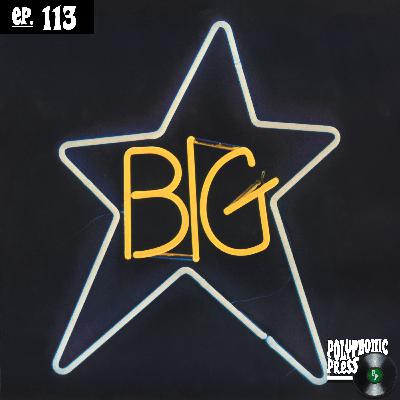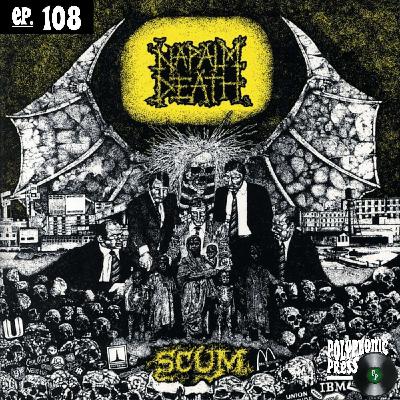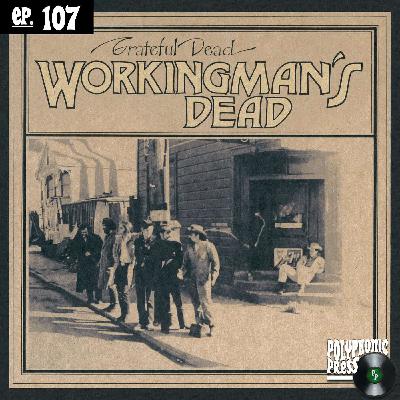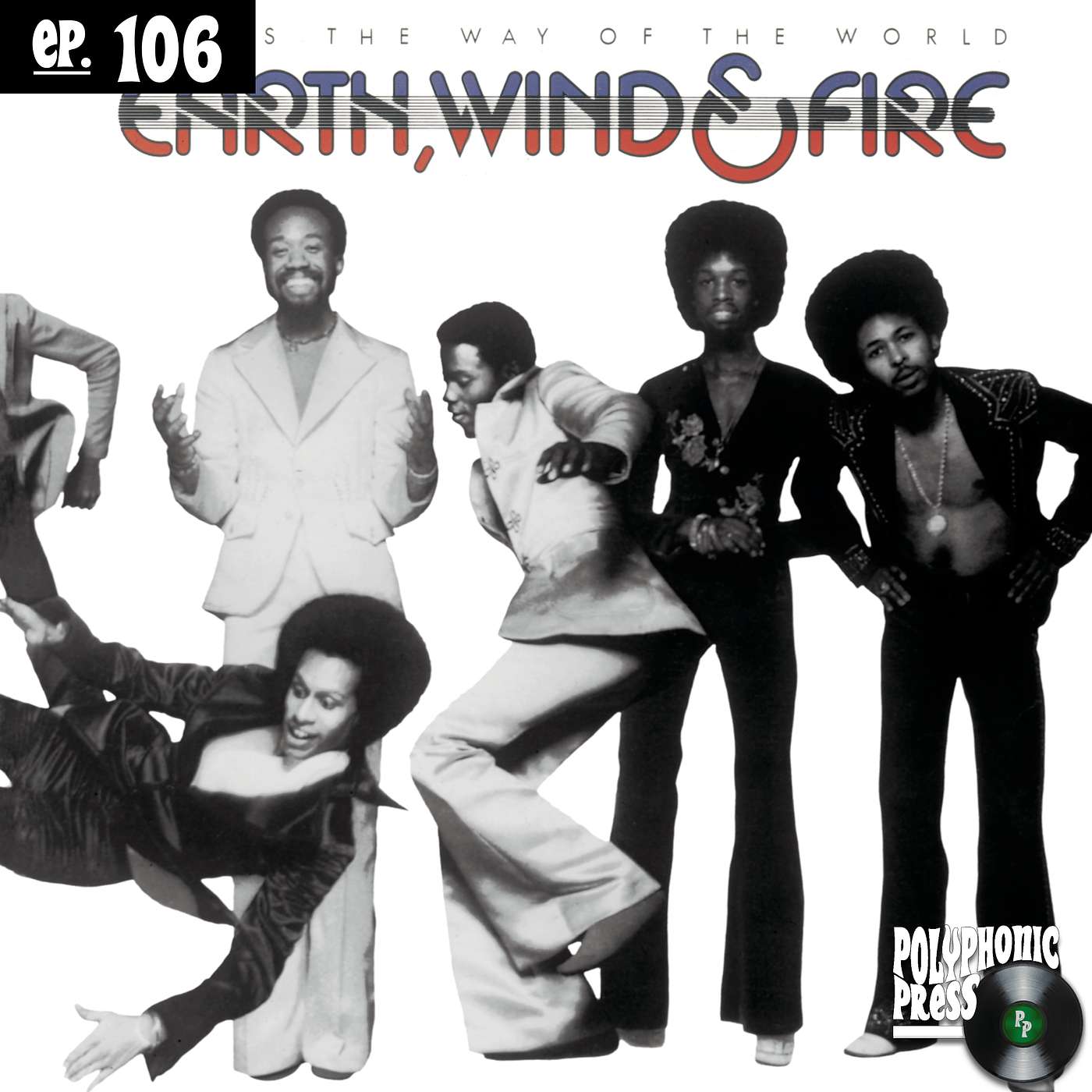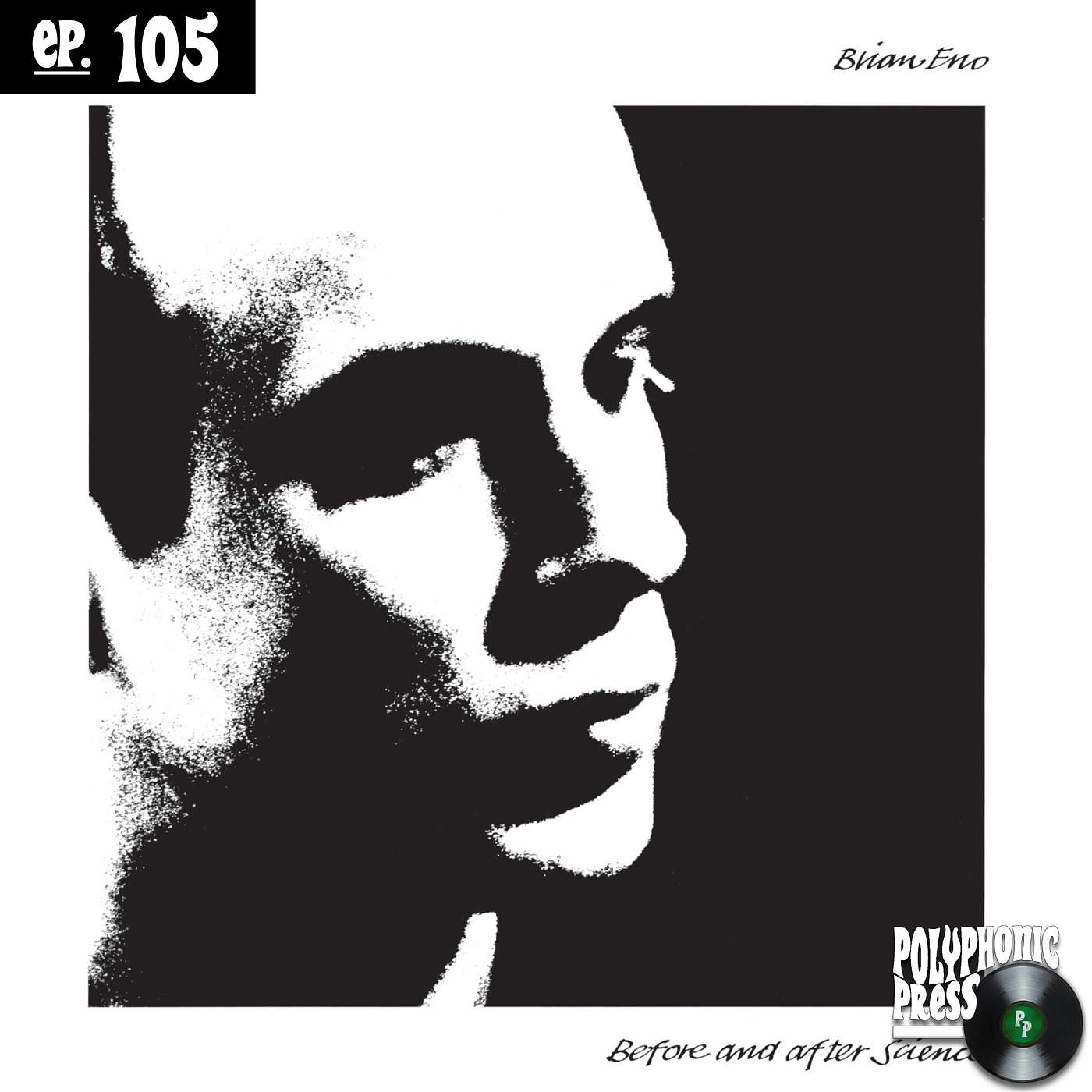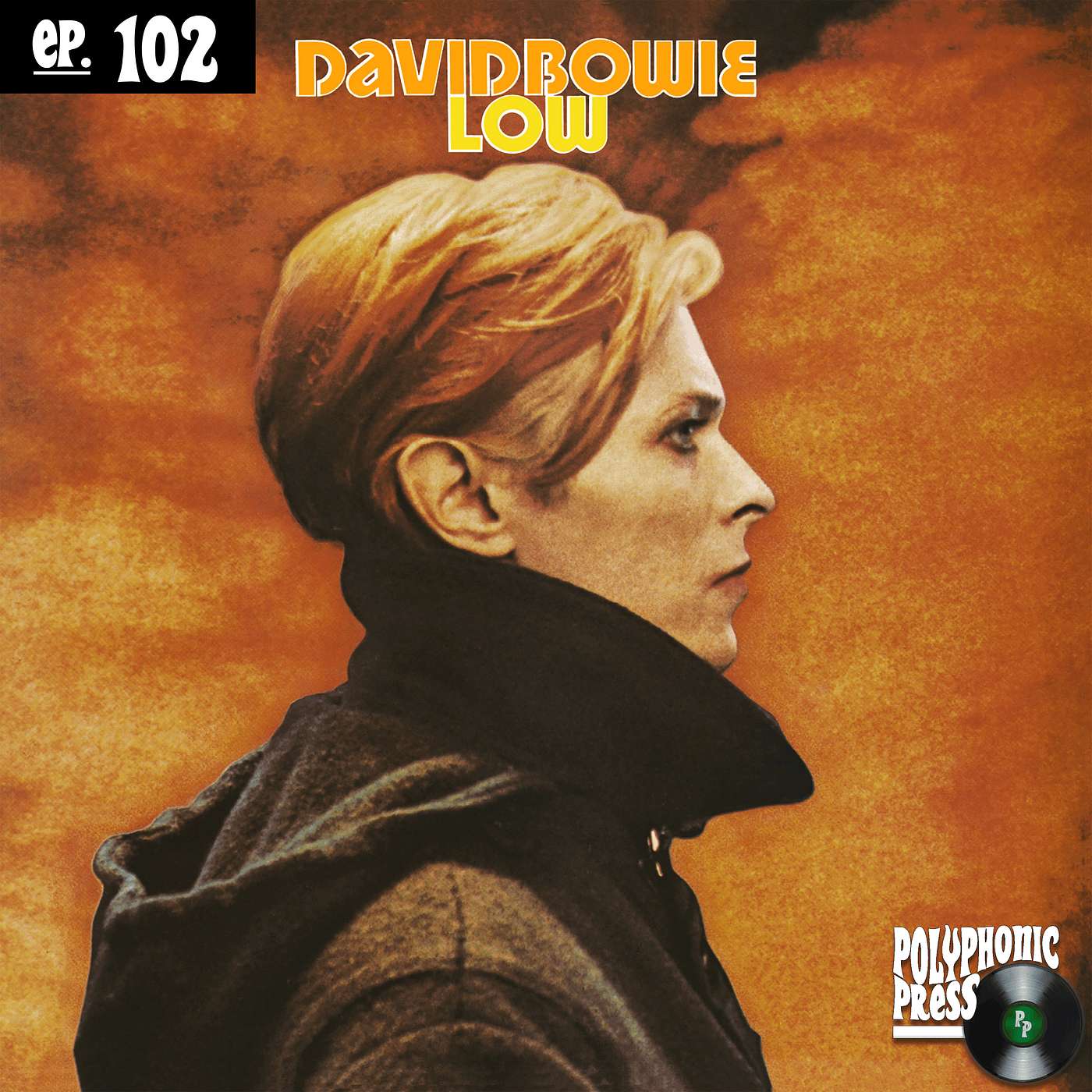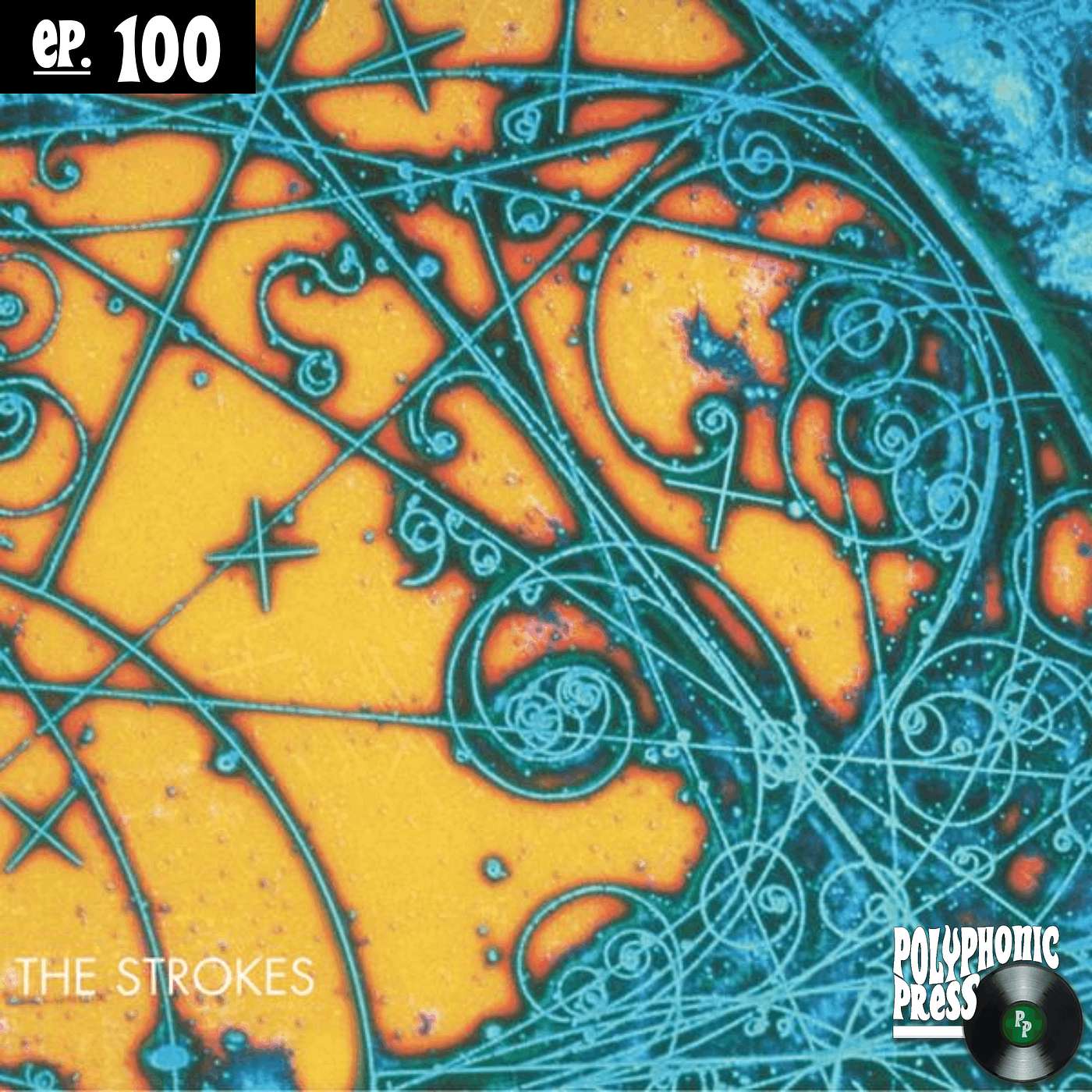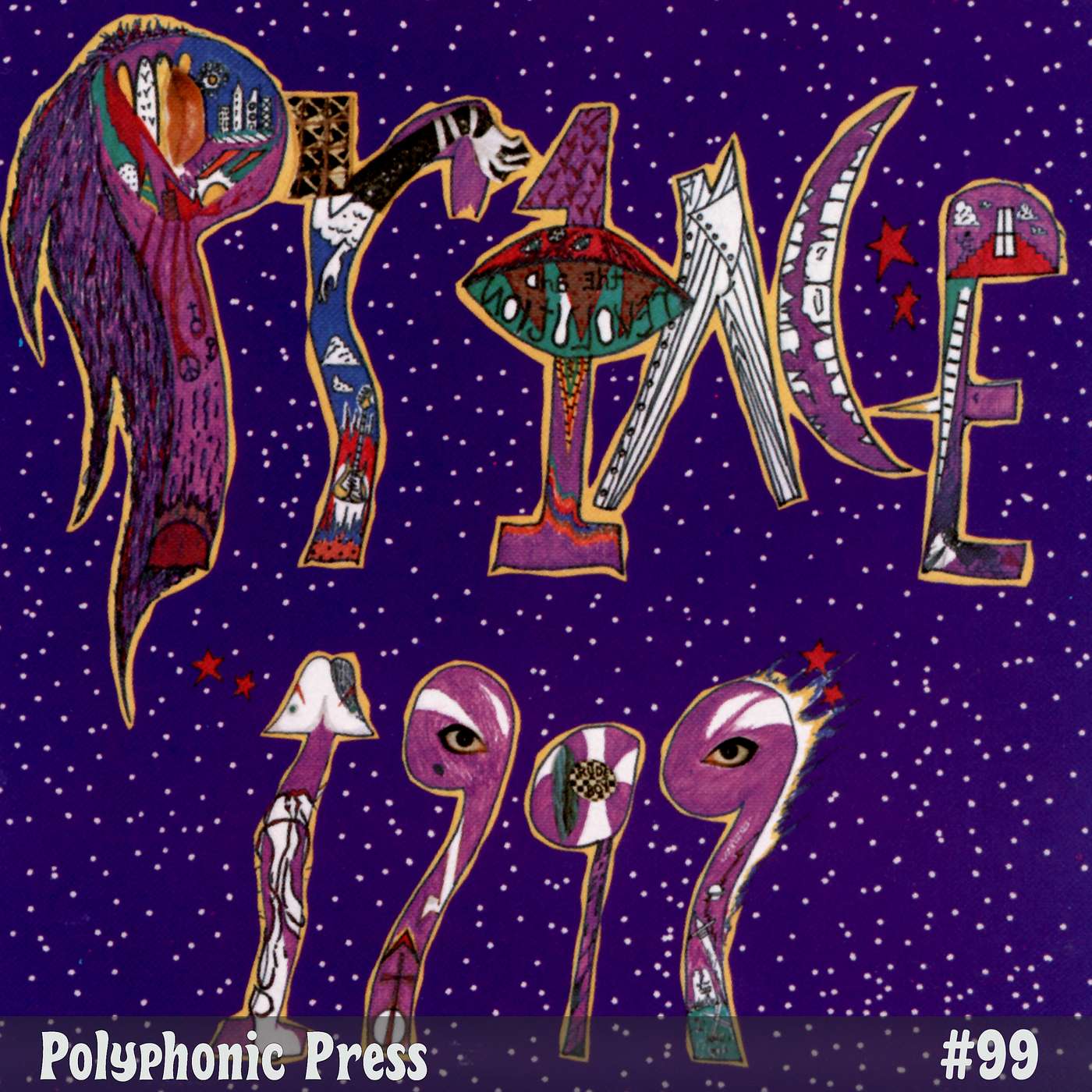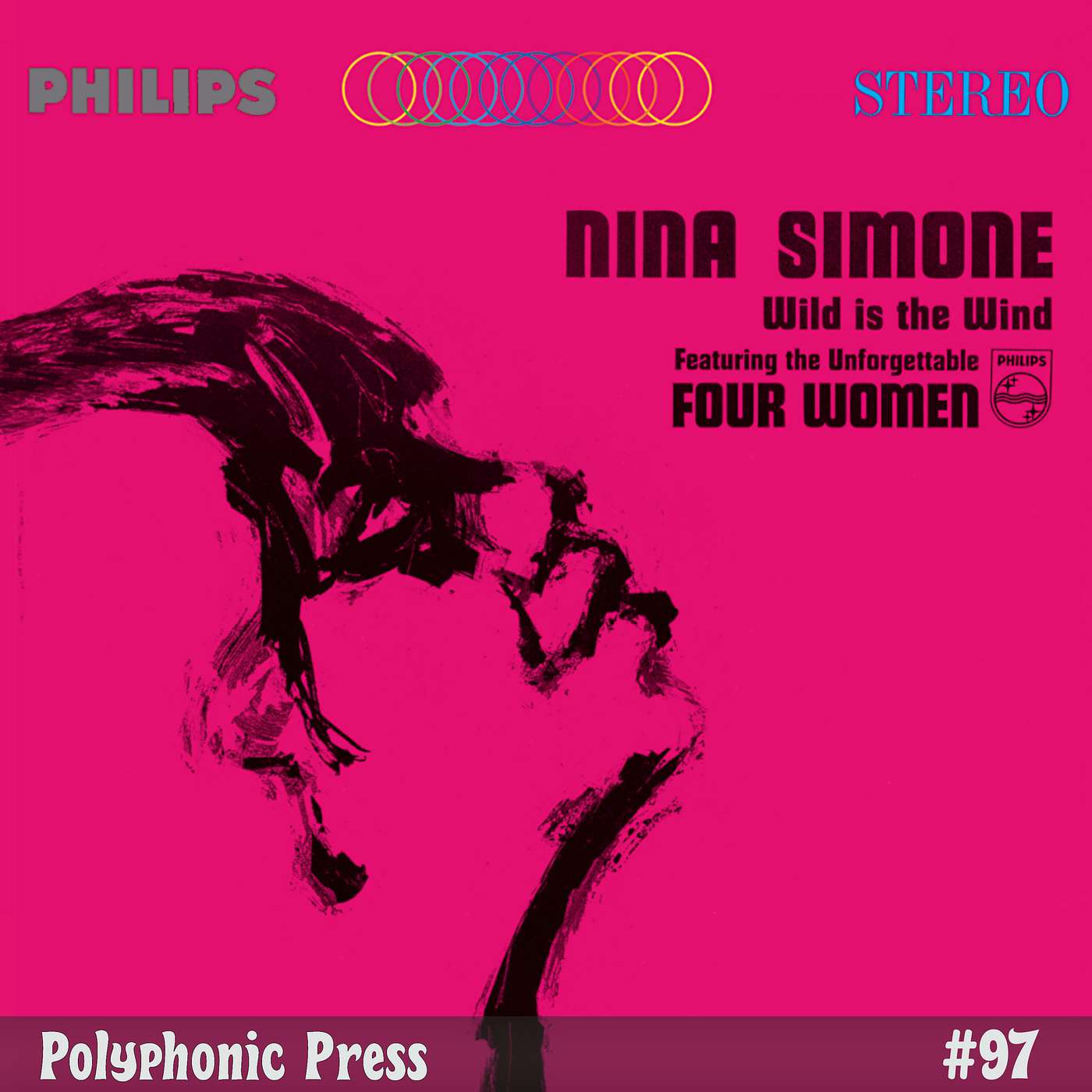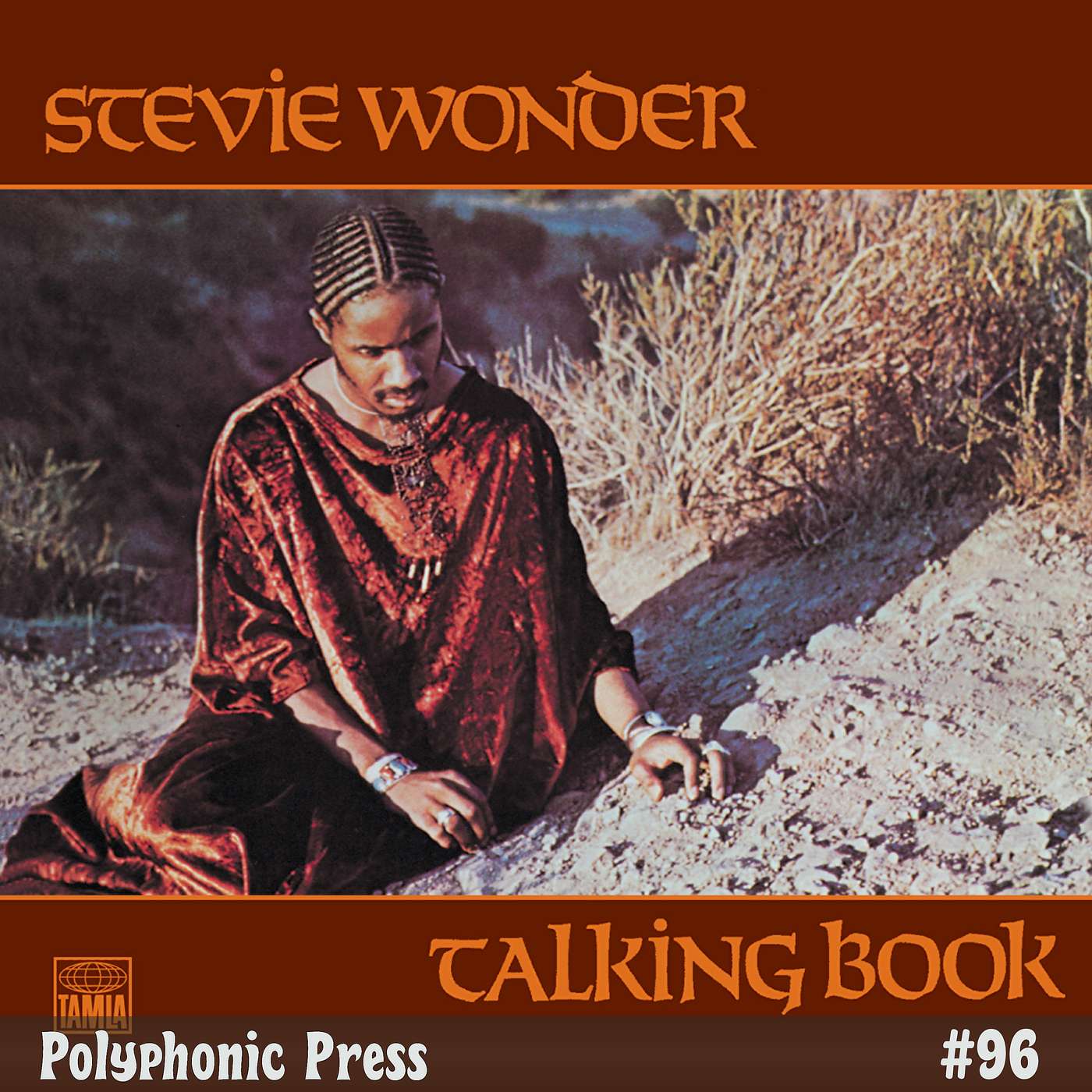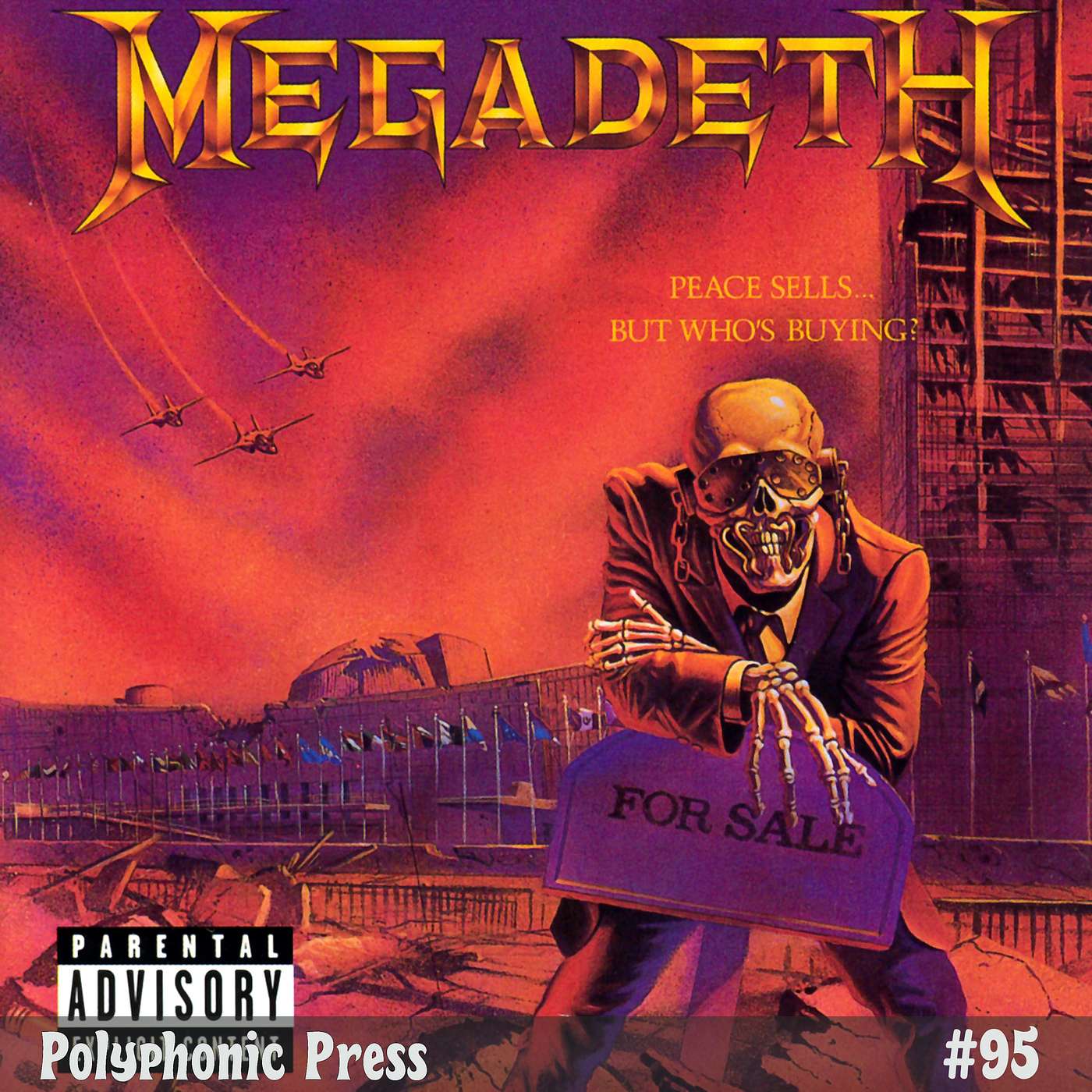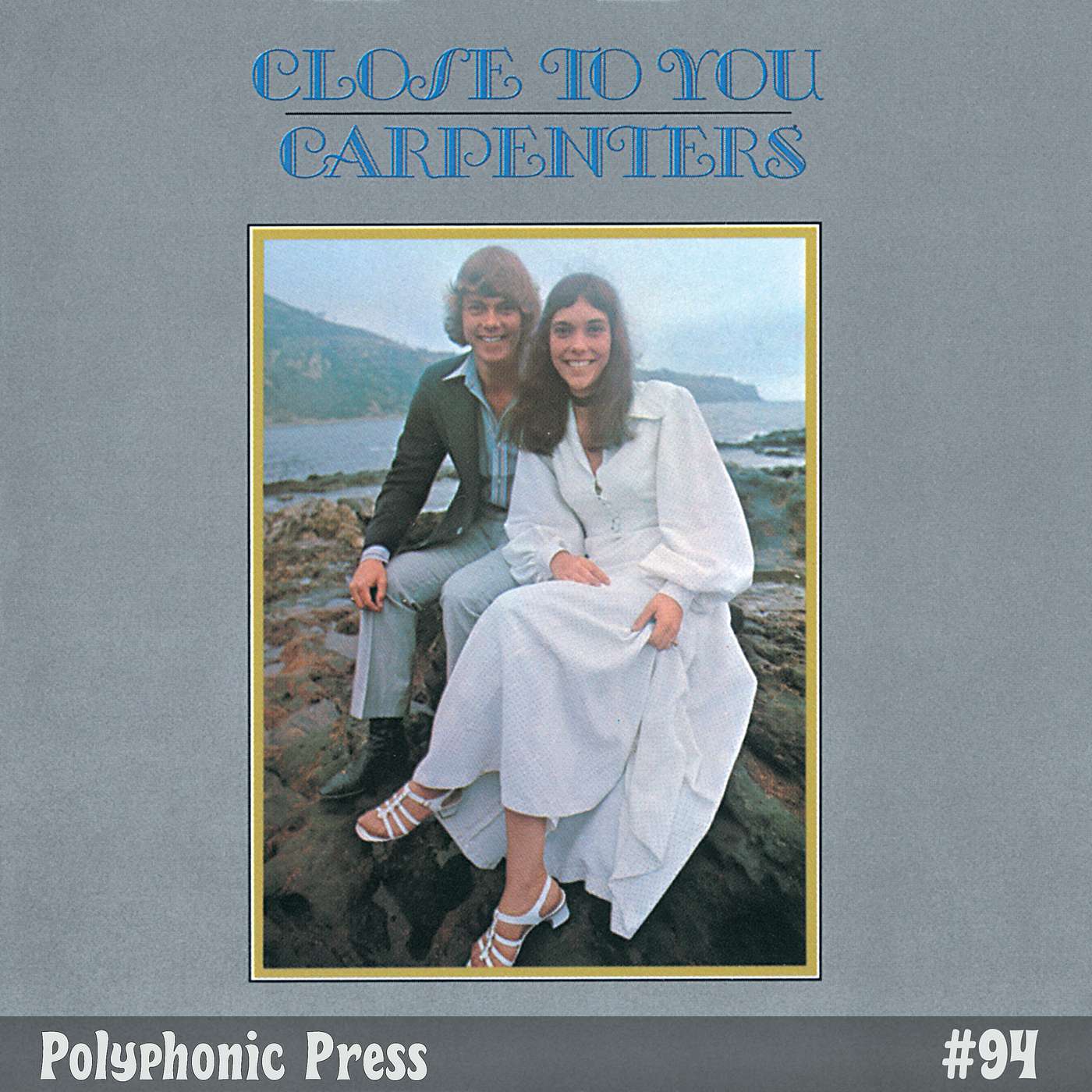Discover Polyphonic Press - Classic Album Reviews
Polyphonic Press - Classic Album Reviews

Polyphonic Press - Classic Album Reviews
Author: Jeremy Boyd & Jon VanDyk
Subscribed: 3Played: 96Subscribe
Share
© 2025 Polyphonic Press. All rights reserved.
Description
Polyphonic Press is the show for music fans. Anywhere from the casual listener to the nerdiest of audiophiles. Each week, we review a classic album from a curated list of over one thousand releases, spanning multiples genres. At the top of each show, we have no idea what album we’re going to listen to. So we fire up the Random Album Generator and it gives the album of the week. Join us every Tuesday morning for a new classic album to discover!
114 Episodes
Reverse
Released in 1972, #1 Record is the debut album by Big Star, a band from Memphis, Tennessee that blended British Invasion melodies with Southern soul and jangly guitar pop. Though it wasn’t a commercial success upon release, the album became one of the most influential records in rock history — laying the groundwork for what would later be called power pop.Led by Alex Chilton (formerly of The Box Tops) and Chris Bell, the album is full of shimmering harmonies, chiming guitars, and bittersweet lyrics about youth, love, and longing. Songs like “The Ballad of El Goodo”, “Thirteen”, and “When My Baby’s Beside Me” showcase the band’s knack for melody and emotional depth, while tracks such as “Feel” and “Don’t Lie to Me” add a raw rock edge.Despite glowing reviews, poor distribution from their label, Ardent Records (through Stax), meant #1 Record didn’t reach a wide audience at the time. However, its influence can be heard in countless bands that followed, including R.E.M., The Replacements, Teenage Fanclub, and Wilco. Today, it’s celebrated as a cornerstone of American pop-rock, a perfect mix of heartache and harmony that captures both the innocence and melancholy of early 1970s youth.
A bass-smashing cover. Nineteen tracks that refuse to sit still. And a city’s pulse pressed into vinyl. We spin The Clash’s London Calling and pull apart why this double album still feels urgent, generous, and wildly playable decades later. From the title track’s warning siren to the upbeat surprise of Train in Vain, we follow the thread that ties punk grit to ska bounce, reggae sway, and power-pop shine without losing the band’s core fire. We take you into late-70s Britain—recession, unrest, and a hungry band rehearsing in near squalor—where cross-pollination with Jamaican sound systems and club culture shaped the record’s muscle and movement. You’ll hear how sequencing keeps the double LP lean, why Lost in the Supermarket hits harder as life gets pricier, and how Clampdown proves that urgency and musicianship can coexist. We also unpack the Guy Stevens sessions that chased chaos for feel, the Elvis-referencing cover that nods at lineage while smashing through it, and the band’s decision to price a double album like a single to keep the music accessible. Along the way, we argue for favourite cuts—Brand New Cadillac, Spanish Bombs, Clampdown—track early hip-hop echoes in The Guns of Brixton, and explain how that unlisted closer became a signature. If you love music history, genre-blending, or records that meet the moment, this is a deep, spirited listen that makes the case for London Calling as more than a classic: it’s a living document of rebellion, craft, and community. Subscribe for more classic album dives, share with a friend who needs this record in their life, and leave a review to help other music fans find the show. What are your top three tracks from London Calling?What did you think of this album? Send us a text!Support the showWebsite Contact
Released in 1986, Skylarking stands as one of XTC’s most celebrated and cohesive works—a shimmering, pastoral pop masterpiece that marries the band’s sharp songwriting with lush, orchestral production. Produced by Todd Rundgren, the album was conceived as a conceptual song cycle tracing the arc of an English summer’s day, paralleling the stages of life from youthful innocence to adult disillusionment and beyond.The music is a sun-dappled blend of baroque pop, psychedelia, and classic British songwriting, evoking the melodic sophistication of The Beatles, The Beach Boys, and The Kinks while remaining distinctly XTC in tone and wit. Songs like “Grass” and “Season Cycle” celebrate nature’s rhythms and sensuality, while “Dear God” (originally a B-side, later a U.S. hit) offers biting social commentary and existential questioning.Lyrically, frontman Andy Partridge and bassist Colin Moulding explore themes of love, faith, time, and the bittersweet beauty of everyday life. Rundgren’s layered arrangements give the album a continuous, almost cinematic flow—each track melting into the next like scenes in a pastoral dream.Over time, Skylarking has been reappraised as one of the finest British albums of the 1980s, and many fans regard it as XTC’s crowning achievement—a radiant and wistful meditation on life, nature, and the passage of time.What did you think of this album? Send us a text!Support the showWebsite Contact
The Allman Brothers Band’s Eat a Peach (1972) is both a celebration of their fiery Southern rock sound and a poignant farewell to founding guitarist Duane Allman, who died in a motorcycle accident during its recording. The album is a hybrid of studio tracks, live performances, and unfinished sessions completed after Duane’s passing, making it both a tribute and a continuation of the band’s momentum.Musically, it captures the group at their creative peak: blending blues, rock, country, and jazz with extended improvisations. The live centerpiece, the 33-minute “Mountain Jam,” showcases the band’s jam-band ethos, while songs like “Melissa” and “Ain’t Wastin’ Time No More” reveal a more reflective, personal side in the wake of tragedy. Studio tracks such as “Blue Sky,” written and sung by Dickey Betts, bring a bright optimism that counterbalances the album’s sense of loss.The title, famously drawn from Duane’s offhand comment that “every time I’m in Georgia, I eat a peach for peace,” adds to the record’s bittersweet aura. Eat a Peach became both a commercial success and a symbolic turning point, solidifying the Allman Brothers as pioneers of Southern rock while memorializing the spirit of a fallen bandmate.What did you think of this album? Send us a text!Support the showWebsite Contact
Live Through This (1994) by Hole is a raw, emotionally charged album that captures the turbulent spirit of the 1990s alternative rock scene. Released just a week after the death of Kurt Cobain and only months before the tragic passing of bassist Kristen Pfaff, the record is both deeply personal and culturally resonant. Courtney Love’s fierce vocals cut through layers of punk aggression and melodic grunge, blending rage, vulnerability, and biting wit in equal measure.The album balances abrasive guitar riffs with surprisingly hook-laden choruses, offering anthems that swing between chaotic catharsis and melodic accessibility. Songs like “Miss World” and “Violet” tear into themes of identity, femininity, and self-destruction, while tracks such as “Doll Parts” expose raw longing and fragility. Its lyrics dissect beauty standards, fame, and the dark undercurrents of love and loss, giving the record a confrontational yet deeply human edge.Often hailed as Hole’s defining work, Live Through This stands as one of the most significant feminist statements in rock. It pushed grunge into more emotionally complex territory, resonating with listeners who saw themselves in Love’s unapologetic anger and aching vulnerability. Today, it’s remembered not just as Hole’s breakthrough but as a landmark alternative rock album of the 1990s.Listen to the album on Apple MusicListen to the album on SpotifyWhat did you think of this album? Send us a text!Support the showWebsite Contact
Scum by Napalm Death is one of the most important and influential extreme metal albums ever released. Put out in 1987 on Earache Records, it’s widely regarded as the birth point of grindcore—a genre that fused the speed and aggression of hardcore punk with the heaviness and brutality of death and thrash metal. The record is notorious for its breakneck pace, chaotic song structures, and vocals that veer between guttural growls and high-pitched screams.The album is split into two distinct halves, reflecting its unusual recording process. The first side was recorded in 1986 with one lineup, featuring Nik Bullen on bass and vocals, Justin Broadrick on guitar, and Mick Harris on drums. The second side was recorded in 1987 with a nearly completely different lineup—Lee Dorrian on vocals, Jim Whitely on bass, Bill Steer on guitar, and again Mick Harris on drums—cementing Napalm Death as more of a collective than a stable band at that time. Despite the lineup shift, both halves share a relentless energy and uncompromising approach to sound.Scum is also famous for its brevity and intensity: most songs clock in under two minutes, and the album’s most notorious track, “You Suffer,” runs just 1.316 seconds, earning it a Guinness World Record. Its raw production, politically charged lyrics, and uncompromising extremity made it an underground classic, inspiring countless metal and hardcore bands and shaping the blueprint for grindcore as a genre.Listen to the album on Apple MusicListen to the album on SpotifyWhat did you think of this album? Send us a text! Support the showWebsiteContact
Workingman’s Dead (1970) is one of the Grateful Dead’s most celebrated and influential albums, marking a sharp turn from their earlier, more experimental psychedelic sound toward a rootsier, song-focused approach. Recorded quickly and on a tight budget after years of heavy touring and debt, the record draws heavily from folk, country, and Americana traditions. Its stripped-down arrangements, warm harmonies, and storytelling lyrics show the band’s deepening connection to American roots music and their desire to create something more accessible than their previous sprawling jams.The album features some of the Dead’s most enduring songs, including “Uncle John’s Band,” “Casey Jones,” “Dire Wolf,” and “High Time.” These tracks showcase the group’s evolving focus on vocal harmonies (inspired by contemporaries like Crosby, Stills & Nash) and narrative songwriting rooted in rural imagery, cautionary tales, and mythical Americana. The shift reflected both a practical need—simpler songs worked better on the road—and an artistic choice, capturing the spirit of early 1970s back-to-the-land culture.Critically, Workingman’s Dead was a turning point that brought the band new recognition and commercial success. It helped redefine their identity from a purely psychedelic San Francisco jam band into a cornerstone of Americana rock. Along with its companion album, American Beauty (released later the same year), it remains a fan favorite and a landmark in the fusion of rock with folk and country traditions.Listen to the album on Apple MusicListen to the album on SpotifyWhat did you think of this album? Send us a text! Support the showWebsiteContact
That’s the Way of the World (1975) is often considered Earth, Wind & Fire’s defining statement, blending soul, funk, jazz, and gospel into a sound that was both deeply spiritual and irresistibly danceable. Released at the height of the band’s creative powers, the album embodies the vision of Maurice White, who sought to create music that was uplifting, universal, and transcendent. With its mix of lush horn arrangements, intricate rhythms, and soaring vocals, the record stands as both a cultural touchstone of the 1970s and one of the most celebrated soul albums of all time.The album opens with its iconic title track, a slow-burning ballad filled with hope and wisdom, setting a tone of reflection and uplift that carries through the record. From there, the band moves into radiant, high-energy funk with tracks like Shining Star—a #1 hit that brought them mainstream success—while songs like Reasons showcase the group’s ability to balance groove with tenderness and emotional depth. Each track contributes to a greater whole, with messages of unity, love, and perseverance woven seamlessly into the music.Beyond its commercial success, That’s the Way of the World has endured because of its ability to inspire. It is as much a philosophical statement as it is an album, speaking to universal struggles and joys while delivering them through some of the most polished and innovative arrangements of its era. More than just a collection of songs, it represents Earth, Wind & Fire’s belief in music as a healing, guiding force—and remains one of the greatest achievements in the history of R&B and soul.Listen to the album on Apple MusicListen to the album on SpotifyWhat did you think of this album? Send us a text! Support the showWebsiteContact
Before and After Science (1977) by Brian Eno is one of his most acclaimed solo albums, bridging his experimental rock sensibilities with the ambient style he would soon pioneer. The record is structured almost like two different worlds: the first half is energetic, angular, and rhythm-driven, while the second half drifts into ethereal, meditative territory.On the front side, tracks like “No One Receiving” and “King’s Lead Hat” showcase Eno’s playful, jagged approach to art-rock, brimming with quirky rhythms, fractured guitar lines, and off-kilter energy. These songs lean heavily on collaborations with musicians like Robert Fripp, Phil Collins, and members of Can, giving the music a restless, forward-driving feel.The latter half of the album shifts dramatically into stillness and spaciousness. Songs like “By This River” and “Spider and I” are hushed, delicate, and hauntingly beautiful, foreshadowing Eno’s deep dive into ambient music. The contrast creates a sense of movement from chaos to calm—an arc that mirrors the album’s title.Ultimately, Before and After Science stands as a transitional record in Eno’s career, marrying his pop and rock experiments with the serene atmospheres that would define his most influential work. It remains a fan favorite for its balance of accessibility, strangeness, and emotional resonance.Listen to the album on Apple MusicListen to the album on SpotifyWhat did you think of this album? Send us a text! Support the showWebsiteContact
Forever Changes by Love, released in 1967, is a lush, intricate, and hauntingly beautiful blend of psychedelic rock, folk, and baroque pop. Recorded during a turbulent time for the band and for frontman Arthur Lee personally, the album stands apart from the louder, fuzz-driven sounds of the era by embracing a more acoustic, orchestral approach. Gentle guitars intertwine with mariachi-style brass, delicate strings, and Lee’s poetic, often cryptic lyrics that hint at paranoia, social unrest, and fleeting beauty.The songs move between breezy, pastoral melodies and sudden, unsettling shifts, creating a mood that’s both warm and slightly foreboding — a reflection of the late 1960s cultural climate. Tracks like “Alone Again Or,” “Andmoreagain,” and “You Set the Scene” capture a timeless, almost dreamlike quality. Though initially a modest commercial success, Forever Changes has since been hailed as one of the greatest albums of all time, a shimmering yet bittersweet portrait of a changing world.What did you think of this album? Send us a text! Support the showWebsiteContact
Left and Leaving is the second album by Canadian indie rock band The Weakerthans, and it’s often regarded as their defining statement. Released in 2000, the record blends literate, introspective lyrics with punk roots and folk-tinged melodies. Frontman John K. Samson, formerly of Propagandhi, brings a poet’s eye for detail and a novelist’s sense of character, crafting songs about lost love, aging ideals, hometown melancholy, and quiet resilience.Set against the backdrop of Winnipeg — a recurring character in their work — the album captures emotional nuance with rare honesty. Tracks like “Aside,” “Watermark,” and the heartbreaking title track “Left and Leaving” feel both deeply personal and universally relatable. The band’s sound is understated but rich, weaving melodic guitar lines with steady, unflashy rhythms that give the lyrics room to breathe.More than just an indie rock album, Left and Leaving is a gentle, profound meditation on the spaces we inhabit, the people we miss, and the versions of ourselves we try to hold onto — or let go of.Listen on Apple MusicListen on SpotifyWhat did you think of this album? Send us a text! Support the showWebsiteContact
Low (1977) is David Bowie’s groundbreaking 11th studio album and the first installment in his celebrated "Berlin Trilogy," produced in collaboration with Brian Eno and Tony Visconti. Marking a radical departure from his previous glam rock sound, Low is split into two distinct halves: the first side features fragmented, experimental art rock and electronic pop songs, while the second side dives into haunting, ambient instrumentals. Recorded in the wake of personal turmoil and relocation to West Berlin, the album reflects themes of alienation, dislocation, and emotional numbness. Tracks like “Sound and Vision” and “Be My Wife” showcase Bowie’s minimalist lyrical approach, while Side B’s atmospheric compositions such as “Warszawa” evoke a post-war European desolation. Initially polarizing, Low is now widely regarded as one of Bowie’s most influential and visionary works, paving the way for post-punk, new wave, and ambient music.Listen to the album on Apple MusicListen to the album on SpotifyWhat did you think of this album? Send us a text! Support the showWebsiteContact
Heavy Weather is the landmark 1977 album by jazz fusion supergroup Weather Report, and one of the genre’s defining records. Blending the virtuosity of jazz with the electricity of rock and the rhythmic sensibilities of funk and Latin music, the album finds the band at their creative peak. Led by keyboardist Joe Zawinul and saxophonist Wayne Shorter, and featuring the explosive fretless bass work of Jaco Pastorius, Heavy Weather introduced a new level of accessibility to jazz fusion without compromising its complexity.The album opens with the now-iconic “Birdland,” a joyous, infectious track that became a crossover hit and a jazz standard. Elsewhere, the band explores cinematic moods (“A Remark You Made”), high-octane groove workouts (“Teen Town”), and extended sonic landscapes (“Harlequin” and “Havona”). Each member’s contribution is distinct and dazzling, yet the ensemble playing remains tight and cohesive. The album's production is crisp, lush, and layered—showcasing a band pushing the limits of their instruments and genre.What did you think of this album? Send us a text! Support the showWebsiteContact
Released in 2001, Is This It is the explosive debut album by The Strokes that helped reinvigorate rock music at the turn of the millennium. With its raw production, garage rock revival sound, and effortlessly cool aesthetic, the album quickly became a defining statement of early-2000s indie rock. Julian Casablancas’ detached, often distorted vocals, paired with choppy guitar riffs and tight, punchy rhythms, gave the album a stripped-down but infectious energy. Tracks like “Last Nite,” “Someday,” and “Hard to Explain” blend retro influences—like The Velvet Underground and Television—with modern swagger, carving out a timeless and influential sound. Is This It isn’t just a debut; it's a cultural reset that marked a new era for rock bands in the 21st century.What did you think of this album? Send us a text! Support the showWebsiteContact
1999 by Prince, released in 1982, is one of the most iconic albums of the 1980s, blending funk, rock, pop, and new wave into a genre-defying masterpiece. The album is known for its innovative sound, with Prince experimenting with synthesizers, drum machines, and layered vocals. It tells stories of both hedonistic parties and deeper introspective themes, combining party anthems with existential questions.The album's title track, “1999,” is an upbeat, funky anthem about celebrating life and living for the moment, while songs like "Little Red Corvette" delve into the complexities of love and relationships. The mix of sensuality and existential reflection throughout the album marks it as a defining moment in Prince’s career, blending danceability with depth. 1999 not only became one of Prince’s best-selling albums but also helped solidify his status as one of the most innovative artists of his generation.With its infectious grooves and layered production, 1999 remains a groundbreaking achievement in both pop and funk music.What did you think of this album? Send us a text! Support the showWebsiteContact
Released in October 1990, Behaviour is the fourth studio album by British synth-pop duo Pet Shop Boys. Often regarded as their most introspective and mature work, the album marked a shift from the high-energy dance-pop of their earlier records to a more subdued, melodic, and reflective sound.Produced in collaboration with Harold Faltermeyer, Behaviour is characterized by warm analog synthesizers and lush orchestration, which complement the melancholic and thoughtful lyrical themes. Tracks like “Being Boring,” a nostalgic meditation on youth and loss, and “This Must Be the Place I Waited Years to Leave,” a tale of regret and disillusionment, exemplify the album's emotional depth. Despite its more restrained tone, the record still features infectious moments of pop brilliance, such as “So Hard” and “Jealousy.”Critically acclaimed for its sophisticated songwriting and emotional resonance, Behaviour has grown in stature over the years and is often cited by fans and critics alike as one of Pet Shop Boys’ finest and most enduring works.What did you think of this album? Send us a text! Support the showWebsiteContact
Released in 1966 by Philips Records, Wild Is the Wind is one of Nina Simone’s most emotionally potent and artistically rich albums. A collection of outtakes from previous sessions, the album transcends its piecemeal origins to form a hauntingly cohesive statement on love, longing, and personal turmoil. Simone’s vocal delivery is raw and deeply expressive, gliding effortlessly from tender vulnerability to defiant strength.The title track, “Wild Is the Wind,” is a masterclass in interpretation—Simone stretches the song into a slow-burning, sensual lament, transforming it into one of her signature performances. Other highlights include “Four Women,” a powerful narrative exploring the intersecting identities of Black womanhood, and “Lilac Wine,” a delicate, dreamlike ballad.Blending elements of jazz, classical, folk, and blues, Wild Is the Wind showcases Simone’s genre-defying artistry and her unmatched ability to convey complex emotional landscapes. It remains one of her most acclaimed and enduring works, celebrated for both its political consciousness and its poetic beauty.What did you think of this album? Send us a text! Support the showWebsiteContact
Talking Book is the fifteenth studio album by Stevie Wonder, released on October 27, 1972, by Tamla Records, a Motown subsidiary. Widely regarded as a landmark in soul and R&B music, the album marks a turning point in Wonder's career as he gained full creative control over his music. Blending elements of soul, funk, rock, and synthesizer-driven pop, Talking Book showcases Wonder’s innovative production, socially conscious lyrics, and emotional depth.The album features some of his most iconic songs, including the infectious, funk-infused "Superstition" and the tender ballad "You Are the Sunshine of My Life"—both of which became number-one hits. With contributions from legendary musicians like Jeff Beck and Ray Parker Jr., the album is celebrated for its rich textures, pioneering use of the synthesizer, and deeply personal songwriting.Critically acclaimed and commercially successful, Talking Book helped define the sound of 1970s soul and solidified Stevie Wonder’s reputation as a visionary artist.What did you think of this album? Send us a text! Support the showWebsiteContact
"Peace Sells... but Who's Buying?" is the second studio album by American thrash metal band Megadeth, released on September 19, 1986, through Capitol Records. Widely regarded as one of the most influential albums in thrash metal, it solidified Megadeth's position as one of the genre’s “Big Four” alongside Metallica, Slayer, and Anthrax.The album showcases the band’s growing technical prowess, especially the intricate guitar work of Dave Mustaine and Chris Poland, and the tight rhythm section of David Ellefson on bass and Gar Samuelson on drums. Lyrically, the album deals with themes of political corruption, war, and social commentary—reflected in its iconic title track, "Peace Sells", which became a signature song for the band and a defining statement of 1980s metal's more rebellious and critical voice.Produced by Dave Mustaine and Randy Burns, Peace Sells... but Who's Buying? was a major step up in production from their debut, Killing Is My Business... and Business Is Good!, and became a benchmark for thrash metal's musical and thematic potential.Would you like a track-by-track breakdown or a summary of its critical reception and legacy?Listen to the album on Apple MusicListen to the album on SpotifyWhat did you think of this album? Send us a text! Support the showWebsiteContact
Close to You is the breakthrough album by the American pop duo The Carpenters, consisting of siblings Karen and Richard Carpenter. Marking their second studio release, the album propelled them into the spotlight with its soft pop sound, lush orchestration, and Karen Carpenter’s signature warm, melancholic vocals.The album features the iconic title track "(They Long to Be) Close to You," written by Burt Bacharach and Hal David, which became a number-one hit and earned the duo two Grammy Awards. Another standout single, "We've Only Just Begun," also became a wedding standard and a top-charting success.With a blend of pop, soft rock, and easy listening, Close to You captures the early '70s zeitgeist of romantic optimism and gentle melodies. The album’s polished production, melodic arrangements by Richard Carpenter, and Karen’s emotionally resonant voice established The Carpenters as leading figures in the adult contemporary genre.Listen to the album on Apple MusicListen to the album on SpotifyWhat did you think of this album? Send us a text! Support the showWebsiteContact


